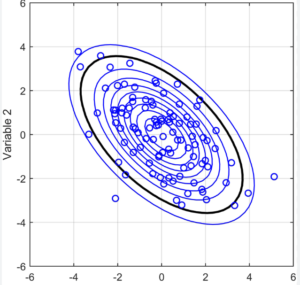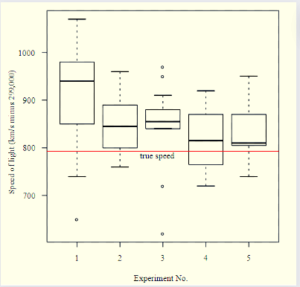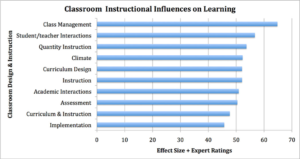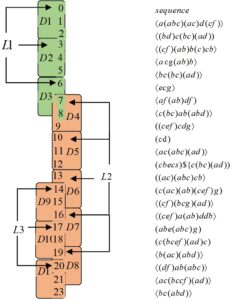The application of graph theory is instrumental in the construction of a practical teaching mode structure for an ideological and political theory (IPE) course rooted in fuzzy system theory. In recent years, IPE education has received more and more attention. System theory can well construct the IPE teaching mode, so we need to have a good grasp of system theory. This paper starts with the significance of system theory in the practical teaching of IPE, finds the IPE curriculum that conforms to system theory, and constructs the basic mode of practical teaching of IPE on this basis. Using the idea of a multi-level fuzzy comprehensive evaluation to quantify teachers’ teaching quality, this paper establishes an algorithm model to quantitatively measure teachers’ teaching quality fuzzy.
Graph theory plays a significant role in developing a practical teaching mode structure for an Interprofessional Education (IPE) course based on fuzzy system theory. Through the application of graph theory, educators can effectively design and visualize the relationships and connections between different concepts and learning objectives within the course. By constructing a graph-based knowledge representation, the interdependencies and interrelationships among various components of the course can be mapped out, facilitating the development of a well-organized and comprehensive teaching mode structure[1-3]. Graph theory allows for the creation of concept maps, where nodes represent specific concepts and edges represent the relationships between them. This enables educators to identify the core concepts, highlight important connections, and establish a logical progression of content delivery. Additionally, graph theory can be utilized to analyze and optimize the flow of information, activities, and assessments in the teaching mode structure, ensuring a seamless and coherent learning experience for students. By leveraging the power of graph theory, educators can enhance the effectiveness and efficiency of the IPE course, promoting interdisciplinary collaboration and facilitating a deeper understanding of fuzzy system theory within an interprofessional context [4].
In practical teaching, the teaching content, teaching operation, education management, teaching quality supervision, and evaluation must have a certain systematization to better construct the functional teaching mode of the IPE course [6,7].
System theory mainly studies the overall connection of relevant objects through the comprehensive and systematic study and treatment of the theory of scientific methods [8]. This theory reveals the same law of the interrelationship and interaction between things and objects[9]. Study the internal relations and changes of the system, and find the laws therein. System theory has the principles of integrity, comprehensiveness, hierarchy, structure, and environmental relevance [10,11]. The principle of integrity can well recognize, transform, and manage the research object as a whole, and the internal part of the system should obey the whole system. The comprehensive principle can pay attention to the research object itself in an all-around way, and the research problem can grasp the development of the system more comprehensively and accurately [6-8]. Hierarchy allows people to understand, transform or manage a system more hierarchically, which is beneficial to the hold of the system’s overall function. The structure can make people understand the function and structure of the system faster and better [12].
The principle of environmental relevance enables us to better understand the system’s and its environment’s existence and development. It can be said that system theory is a highly comprehensive scientific method theory that can effectively combine various conditions and use them to form a hierarchical and structured system. For ideological politics, the emergence of system theory can make people understand IPE more truly and effectively [13,14]. Applying system theory to ideological and political practice teaching is significant to constructing a certain teaching model .
The teaching evaluation method is still based on experience and qualitative analysis. The shortcomings of this teaching evaluation method lie in, first, the assessment of teaching standards often involves multiple factors (indicators) rather than only from the situation of one or several factors (indicators); Secondly, in the comprehensive evaluation, the Score every single index.
The basis for the assembly and operation of the practical tutoring mode of IPE courses is the systematization of teaching content[15]. The motive of practical teaching of IPE courses is to cultivate students to use theory to observe society and recognize society. Right now, the contents of IPE courses offered in colleges and universities in China have different emphases, but they all have the same goal, that is, to achieve students’ accurate grasp of Marxist theory and ideological and political education [16]. Then think about your life. The tutoring contents of major colleges and universities are interrelated to form a certain system. This system meets the teaching objectives of IPE courses and can better achieve the motive of scientific and comprehensive ideological and political education for students. As a system, it must have unified normative requirements to a certain extent, which is the systematization of teaching content. The systematization of teaching content can effectively avoid the phenomenon of scattered and random practice teaching and can help practice teaching achieve routine and scientific. Therefore, the first thing to grasp in the practical tutoring phase of the Ideological and theoretical course is the systematization of teaching content.
There is a process in the practical teaching of the IPE course. In the process of practical teaching, the purpose of teaching cannot be achieved directly, but it must be achieved through the process of practice[17,18]. In the current practical teaching, many dynamic factors are added, that is the mixture of tutoring methods and teaching environment and the use of practical methods to complete the teaching of IPE. In the current practical teaching, IPE teaching is regarded as a whole, and a relatively perfect system is established. Through a relatively perfect dynamic grasp of this system, a practical teaching method is formed. This method is mainly based on theoretical teaching[19]. Teachers arrange for students to carry out practical teaching campaigns, apply Marxist theory to practice, let students better grasp and understand Marxist theory in practice, transform Marxist theory into learning objectives in practice, and realize political teaching content. Although this teaching method can make students grasp and understand the Marxist theory well, it must have a certain premise, that is, in the process of practice, they must be able to grasp the whole process of operation well, that is, the systematization of teaching operation process [20].
The integrity, hierarchy, and structure, in theory, are actually the requirements for the management of the system. In a complete system, only when the subsystems cooperate with each other can the role of the system be better played. System management is a scientific management method that realizes the management of the whole system through the management of subsystems. In the practical teaching of IPE, the teaching methods and contents are based on the teaching tasks and teaching objectives. In this way, all departments of the school need to be integrated into a system so as to ensure normal work. The requirements for teachers are outstanding ability, comprehensive quality, and strong IPE and practice foundation so as to build a good teaching management system, which includes excellent teachers, perfect theories, and sufficient funds. Establishing a sound teaching standardization and systematization of IPE teaching and is more conducive to students’ acceptance of IPE knowledge [21,22].
A fuzzy comprehensive assessment is to make a comprehensive correction or decision on the object according to the complexity of the research object and the number of correction factors involved, based on certain goals or standards. Fuzzy comprehensive evaluation can be divided into two types: single-level fuzzy comprehensive correction and multi-level fuzzy comprehensive assessment.
The factors affecting the evaluation object are classified according to attributes, and the factors of different categories belong to different levels. After classification, there are a few elements in each category. On the one hand, the weight is easy to reasonably distribute; on the other hand, the weight coefficient will not be too small, so some limitations of single-level fuzzy correction can be overcome.
First, a single-level fuzzy comprehensive evaluation is carried out on the lower-level factors. When the factors are divided into multiple levels, the factors at the lowest level are generally more specific and easier to grasp and evaluate correctly. Therefore, a comprehensive evaluation of the factors at the lowest level can improve the accuracy of the evaluation results.
On the basis of a single-level fuzzy comprehensive evaluation, the comprehensive evaluation of each factor at the upper level can be carried out. According to the needs, the 2-level, the 3-level, and U-level fuzzy comprehensive evaluation can be obtained in turn. The fuzzy comprehensive evaluation of two or more levels is called multi-level fuzzy comprehensive evaluation.
Generally, it can only be evaluated by selecting a number of representative indicators. The evaluation index set u includes 6 aspects: teaching attitude (\({U_1}\)), teaching content (\({U_2}\)), teaching art (\({U_3}\)), classroom structure (\({U_4}\)), classroom management (\({U_5}\)) and teaching effect (\({U_6}\)), which are recorded as:
\[\label{e1} U = \{ {U_1},{U_2},{U_3},{U_4},{U_5}, {U_6}\}. \tag{1}\]
Taking teaching attitude as an example, the indicators for evaluating teachers’ teaching quality are determined as follows:
Careful lesson preparation (\({U_1}\));
Dignified appearance (\({U_{12}}\));
Being patient and enthusiastic to students (\({U_3}\)).
\({U_1}\)= careful lesson preparation, dignified appearance, patience and enthusiasm for students corresponding elements \({U_1} = \left\{ {{U_{11}},{U_{12}},{U_{13}}} \right\}\) means that the score is denotes the score from \((90 \leqslant {U_1}\leqslant 100;80 \leqslant {U_2} \leqslant 90;70 \leqslant {U_3} \leqslant 80;60\leqslant {U_4}\leqslant 70;40\leqslant {U_5}\leqslant 60;0\leqslant {U_6} \leqslant 40)\), See Table 1 for specific index system.
| Primary Index | Secondary Indicators |
| Learning attitude \((U_1\)) | Prepared the lessons carefully \((U_11\)); The dignified appearance \((U_12\)); Be patient and enthusiastic for students \((U_13\)) |
| Learning content \((U_2\)) | Clear learning objective \((U_21\)); Science of learning content \(U_22\);Handling key and difficult points \((U_23\)); Appropriate number of lectures \((U_24\)) |
| Learning land \((U_3\)) | Good at inspiring thought \((U_31\)); Pay attention to differences in personality \((U_32\)); Guidance on teaching methods \((U_33\));Teaching language and blackboard writing \((U_34\)); Strengthens students’ interest in learning \((U_35\)); Rich learning methods \((U_36\)) |
| Classroom structure \((U_4\)) | Design of learning links \((U_41\)); Connection between old and new knowledge \((U_42\)) |
| Classroom management \((U_5\)) | Distant to and from class on time \((U_51\)); Strictly require students \((U_52\)); Classroom discipline \((U_53\)) |
| Teaching effect \((U_6\)) | Distant to and from class on time \((U_61\)); Strictly require students \((U_62\)); Classroom discipline \((U_63\)) |
Each element set up to the evaluation set [23] can be constructed as: \[\label{e2} U :\mu = {\frac{1}{{21}}(62 – x)}, \tag{2}\] where \(x\) is the score obtained by each element in \(U\).
According to the hierarchical structure of the above teaching quality evaluation, the expert evaluation method is used to determine the influence weight of the factors of each criterion layer on the target layer and the weight value of each influence factor on the evaluation goal as shown in Table 2 (Note: the mass of the secondary index in the above table refers to the weight of the secondary index relative to its upper-level index).
| Serial number | Primary indicators and weights | Secondary indicators and weights |
| 1 | \(U_1\)(0.108) | \(U_11\)(0.668) \(U_12\)(0.098) \(U_13\)(0.234) |
| 2 | \(U_2\)(0.245) | \(U_21\)(0.107) \(U_22\)(0.529) \(U_23\)(0.243) \(U_24\)(0.121) |
| 3 | \(U_3\)(0.174) | \(U_31\)(0.315) \(U_32\)(0.100) \(U_33\)(0.207) \(U_34\)(0.116) \(U_35\)(0.195) \(U_36\)(0.095) |
| 4 | \(U_4\)(0.101) | \(U_41\)(0.800) \(U_42\)(0.200) |
| 5 | \(U_5\)(0.090) | \(U_51\)(0.169) \(U_52\)(0.447) \(U_53\)(0.384) |
| 6 | \(U_6\)(0.28) | \(U_61\)(0.200) \(U_62\)(0.800) |
5 examples of fuzzy evaluation of teaching quality, the scoring results of each index of a teacher are shown in Table 3, and the evaluation steps are as follows:
Through the first level fuzzy comprehensive evaluation.
According to the score results in Table 3, the scores of each secondary index of the first evaluation index teaching attitude \(U_{1}\) are substituted into Eq. (1). If the score of U11 is 94, the single factor evaluation vector can be obtained by substituting the Eq. (1) \(R_1= (0.4, 0.6 , 0 , 0 , 0 , 0)\), Substitute the score of 85 for the dignified indicator \(U_{12}\) and 89 for the patient and enthusiastic indicator \(U_{13}\) into Eq. (1), then the corresponding evaluation vector is \(U_{12}=(0,0.5,0.5,0,0,0)\); \(U_{13}=(0,0.9,0.1,0,0,0)\). So get \[{R_1} = \left[ \matrix{ {0.4} & {0.6} & 0 & 0 & 0 & 0 \\ 0 & {0.5} & {0.5} & 0 & 0 & 0 \\ 0 & {0.9} & {0.1} & 0 & 0 & 0 \\ }\right] \]
Then, from Eq. 1, we get
\[\begin{align}{B_1} &= {A_1}{R_1}\\ &= \left( {0.668}, {0.098} , {0.234} \right){\text{. }}{R_1}\\ &= \left[\matrix{ {0.4} & {0.6} & 0 & 0 & 0 & 0 \\ 0 & {0.5} & {0.5} & 0 & 0 & 0 \\ 0 & {0.9} & {0.1} & 0 & 0 & 0 } \right]\\ & = \left( { {0.2672} , {0.6604} , {0.0724} , 0, 0 , 0 ,} \right). \end{align}\]
After normalization, the teacher’s teaching attitude score is 26.72% excellent, 66.04% good and 7.24% medium. Now it is stipulated that “excellent”, “good”, “medium”, “qualified” and “poor” The corresponding representative scores of “poor” grades are 95, 85, 75, 65, 50 and 20, which form a grade score matrix. The teacher’s teaching attitude evaluation score is: \[S = \left( {0.0965} , {0.5137} , {0.2480} , {0.0984} , {0.0281} \right.0.0132)\left[ {95}, {85}, {75}, {65}, {50}, {20} \right] = 80.\]
By analogy, concluded that the final result of teachers’ teaching content is
\[B_2= (0.0321, 0.2336, 0.4918, 0.1215, 0.0908 ,0.0302).\] The evaluation result of teaching art is \[B_3= (0.1982 ,0.1628 ,0.3848 ,0.1872 ,0.0335 ,0.0335).\] The evaluation result of classroom structure is \[B_4= (0 ,0.72 ,0.2, 0.08, 0 ,0).\] Evaluation results of classroom management \[B_5= (0.2814 ,0.6679, 0.0507, 0 ,0 ,0).\] The evaluation result of teaching effect is \[B_6= (0 ,0.8, 0.1 ,0.1 ,0 ,0).\]
From the scores obtained above, the fuzzy relationship matrix is obtained:
\[{R} = \left[ \matrix{ {0.2672} & {0.6604} & {0.0724} & 0 & 0 & 0 \\ {0.0321} & {0.2336} & {0.4918} & {0.1215} & {0.0908} & {0.0302} \\ {0.1982} & {0.1628} & {0.3848} & {0.1872} & {0.0335} & {0.0335} \\ 0 & {0.72} & {0.2} & {0.08} & 0 & 0 \\ {0.2814} & {0.6679} & {0.0507} & 0 & 0 & 0 \\ 0 & {0.8} & {0.1} & {0.1} & 0 & 0 } \right].\]
| Primary index | Secondary index score |
| \(U_1\) | \( U_11\)(94) \(U_12\)(85) \(U_13\)(89) |
| \(U_2\) | \(U_21\)(93) \(U_22\)(82) \(U_23\)(73) \(U_24\)(52) |
| \(U_3\) | \(U_31\)(75) \(U_32\)(80) \(U_33\)(77) \(U_34\)(96) \(U_55\) \(U_36\)(45) |
| \(U_4\) | \(U_41\)(86) \(U_42\)(72) |
| \(U_5\) | \(U_51\)(89) \(U_52\)(77) \(U_53\)(94) |
| \(U_6\) | \(U_61\)(72) \(U_62\)(90) |
According to the above calculation, the final evaluation result of the teacher is 80 points The final evaluation result obtained by fuzzy comprehensive evaluation is a proxy value, and the number range is \(0-100\); higher the score, better the quality of classroom teaching, otherwise worse [24].
Higher education institutions should actively promote collaborative innovation and comprehensively cultivate the ability of talents and scientific researchers. The joint innovation mentioned here is mainly about the whole system. Based on the same goal, each subsystem coordinates and cooperates in different ways to achieve the common goal of the whole, as shown in Figure 1, the teaching effect of IPEs; what we need to do is to create a collaborative mechanism to ensure that all parts of practical teaching can effectively coordinate their work, to produce synergy and better complete the education of students. If there is no good collaborative mechanism, there will be many emergencies in the process of practical teaching, which will have an adverse impact on the effect of teaching work.

The goal of practical teaching of the IPE course is for students to better grasp and learn the application of Marxist ideological theory in practice. This goal has a certain degree of abstraction, so it must be divided into levels and structures and transformed into specific practical teaching goals with strong operability. As shown in Figure 2, in the process of strengthening practical teaching, we should also strengthen the awareness of practical education, formulate reasonable plans, and improve the scientific system, which is the requirement of the central document. We should break boundaries between traditional courses to a certain extent and combine different disciplines with IPE so as to achieve the innovation of students’ teaching. The IPE work is divided into several courses. We can integrate the same teaching objectives into the teaching objectives of these courses to carry out unified practical teaching and combine these courses scientifically and effectively, which can not only help the school to complete the teaching work to a certain extent but also enable students to understand the theoretical knowledge of Ideological and political education [16,17].

As shown in Figure 3, different attributes have an impact on teaching. It is necessary for each IPE course to build a teaching system that is based on the requirements of each course. The system theory regards the ideological and political education work as a whole, each discipline is one of the subsystems, and the goals of each subsystem are different, which requires us to design an overall school ideological and political practice teaching system after we have certain research and understanding of each subsystem, that is, each discipline, and effectively avoid the intersection and repetition of content in the teaching process. The construction of this teaching system should change according to the continuous change of the implementation content, and it should be able to keep pace with the times [18].

As shown in Figure 4, the iterative effect of this method, ideological and political practice teaching needs to use various resources in and out of the school to carry out teaching work, which requires us to make rational use of resources and maximize the use. When carrying out ideological and political practice teaching, we can cooperate with the Youth League Committee, student union, academic affairs office and other departments, make full use of various departments, and integrate and utilize the existing resources. As shown in Figure 4, we can also share the resources of the practice site with various departments, which is not only helpful for the ideological and political practice teaching work but also very helpful for the work of other departments of the school.

To sum up, system theory has a great impact on the establishment of the teaching phase of the IPE course. Through the discussion of this paper, the author can provide guidance for the construction of the teaching mode and hopes to have a certain reference significance for future IPE. Using the method of fuzzy comprehensive evaluation in fuzzy mathematics, through the careful consideration of various factors to measure the quality of classroom teaching and the combination of qualitative and quantitative analysis, thus providing a reasonable method for Teachers’ teaching quality.
This work was supported by Zhangzhou Philosophy and Social Science Planning Project. The name of the project: Research on the Great Ideological and Political Resonance of College Students’ Patriotic Emotions in the Era of Great Changes Unseen in a Century- Empathy Education from the Perspective of Communication Studies (Project No. JX23311014).
The authors declare no conflict of interests.
Xu, Y., Tao, Y., Zhang, C., Xie, M., Li, W. and Tai, J., 2022. Review of digital economy research in China: a framework analysis based on bibliometrics. Computational Intelligence and Neuroscience, 2022(1), p.2427034.
Rajendran, A., Balakrishnan, N. and Ajay, P., 2022. Deep embedded median clustering for routing misbehaviour and attacks detection in ad-hoc networks. Ad Hoc Networks, 126, p.102757.
Thornhill-Miller, B., Camarda, A., Mercier, M., Burkhardt, J.M., Morisseau, T., Bourgeois-Bougrine, S., Vinchon, F., El Hayek, S., Augereau-Landais, M., Mourey, F. and Feybesse, C., 2023. Creativity, critical thinking, communication, and collaboration: assessment, certification, and promotion of 21st century skills for the future of work and education. Journal of Intelligence, 11(3), p.54.
Elfert, M., 2023. Humanism and democracy in comparative education. Comparative Education, 59(3), pp.398-415.
Babic, M. and Sharma, S.E., 2023. Mobilising critical international political economy for the age of climate breakdown. New Political Economy, 28(5), pp.758-779.
Moran, K.K. and Sheppard, M.E., 2023. Finding common ground: Medical professionals and special education providers supporting young children and families. Topics in Early Childhood Special Education, 42(4), pp.370-382.
Aksakal, B.S., 2023. Tracing the Transformation of the US’s Hegemonic Paradigm in the Historical Process: From Embedded Liberalism to Disembedded Financial Liberalism. Eskişehir Osmangazi Üniversitesi Sosyal Bilimler Dergisi, 24(1), pp.17-40.
Sovacool, B.K., Iskandarova, M. and Hall, J., 2023. Industrializing theories: a thematic analysis of conceptual frameworks and typologies for industrial sociotechnical change in a low-carbon future. Energy Research & Social Science, 97, p.102954.
Fixler, A.L., Jacobs, L.A. and Davis, C.D., 2023. Police-Social Work Collaboration and the Ethical Practice Paradox: Perspectives from Social Work’s Next Generation. Journal of Progressive Human Services, 35(1), pp.1–34.
Sharma, A., Kawale, S.R., Diwan, S.P. and Gowda, D., 2022, October. Intelligent Breast Abnormality Framework for Detection and Evaluation of Breast Abnormal Parameters. In 2022 International Conference on Edge Computing and Applications, (pp. 1503-1508). IEEE.
Ahmed, T., Begum, R. and Ahmed, S., 2023. Application of Six Sigma tools in footwear industry: an emerging economy case. International Journal of Productivity and Quality Management, 38(2), pp.211-242.
Zhong, L., 2021, February. Research on the practice information system of university students’ innovation and entrepreneurship based on the new computer technology support. In Journal of Physics: Conference Series (Vol. 1744, No. 3, p. 032151). IOP Publishing.
Al‐Diery, T., Page, A.T., Johnson, J.L., Walker, S., Sandulache, D. and Wilby, K.J., 2022. Evidence for the development of skills for education, leadership and innovation through experiential‐based foundational pharmacy residency programs: a narrative review. Journal of Pharmacy Practice and Research, 52(3), pp.180-195.
Wong, D.T. and Ngai, E.W., 2022. Supply chain innovation: Conceptualization, instrument development, and influence on supply chain performance. Journal of Product Innovation Management, 39(2), pp.132-159.
Shen, J., Du, C., Yan, F., Chen, B. and Tu, Z., 2022. Two parameters identification for polarization curve fitting of PEMFC based on genetic algorithm. International Journal of Energy Research, 46(7), pp.9621-9633.
Weiss, M., Baer, M. and Hoegl, M., 2022. The human side of innovation management: Bridging the divide between the fields of innovation management and organizational behavior. Journal of Product Innovation Management, 39(3), pp.283-291.
Zhou, J., Li, B., Zhang, D., Yuan, J., Zhang, W., Cai, Z. and Shi, J., 2023. UGIF-Net: An efficient fully guided information flow network for underwater image enhancement. IEEE Transactions on Geoscience and Remote Sensing, 61, pp. 1-17.
Ali, J., Shan, G., Gul, N. and Roh, B.H., 2023. An intelligent blockchain-based secure link failure recovery framework for software-defined internet-of-things. Journal of Grid Computing, 21(4), p.57.
Ren, X., Ahmed, I. and Liu, R., 2023. Study of topological behavior of some computer related graphs. Journal of Combinatorial Mathematics and Combinatorial Computing, 117, pp.3-14.
Nazeer, S., Sultana, N. and Bonyah, E., 2023. Cycles and paths related vertex-equitable graphs. Journal of Combinatorial Mathematics and Combinatorial Computing, 117, pp.15-24.
Zeng, Y. and Chu, B., 2024. The Appropriate Scale of Competition Between Online Taxis and Taxis Based on the Lotka-Volterra Evolutionary Model. Journal of Combinatorial Mathematics and Combinatorial Computing, 117, pp.25-36.
Guo, Q., 2020. Minimizing emotional labor through artificial intelligence for effective labor management of English teachers. Journal of Combinatorial Mathematics and Combinatorial Computing, 117, pp.37-46.
Peng, R. and Fu, R., 2021. The effect of Chinese EFL students’ learning motivation on learning outcomes within a blended learning environment. Australasian Journal of Educational Technology, 37(6), pp.61-74.
John, P.W., Mohamad, M., Mahmud, S.N.D. and Fuad, N.I.M., 2021. The perceptions of tertiary level learners on the use of mobile app ‘Balloon Vocabulary’in improving vocabulary for reading comprehension. Theory and Practice in Language Studies, 11(9), pp.1007-1017.
1970-2025 CP (Manitoba, Canada) unless otherwise stated.